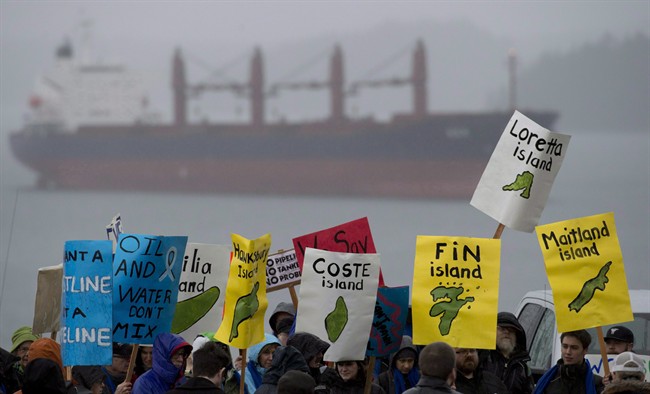VANCOUVER – Some facts about the Northern Gateway pipeline project:

— Its estimated cost is $7 billion and rising.
— The 1,177-kilometre twin pipelines would run from Bruderheim, just outside Edmonton, to a tanker port in Kitimat, on the northern coast of B.C.
— One pipeline would carry up to 525,000 barrels a day of oil sands products west to Kitimat for export. A second heading east would carry 193,000 barrels per day of condensate, a form of natural gas used to dilute the molasses-like bitumen to allow it to flow through pipelines.
— The westbound pipeline would carry synbit, a blend of refined synthetic oil and bitumen, two types of dilbit and synthetic oil.
— The Kitimat Marine Terminal would include two ship berths and 19 tanks to store oil and condensate. The facility would have the capacity to serve around 220 tankers per year.
— The pipeline would be worth an estimated $300 billion in additional gross domestic product over 30 years.
— Governments would net an estimated $80 billion in tax and royalty revenues over those three decades: $36 billion for Ottawa, $32 billion for Alberta and $6.7 billion for B.C. Saskatchewan would net an estimated $4 billion.
— The company says the project would result in 3,000 new construction jobs in B.C. and 560 long-term jobs.
— Northern Gateway Pipelines is a limited partnership. Calgary-based Enbridge (TSX:ENB) has a 50 per cent stake. The rest belongs to 10 private investors.
— Four of those investors remain confidential. National Energy Board documents reveal the other six are: French oil company Total; Suncor (TSX:SU); MEG Energy; Cenovus (TSX:CVE); Nexen (TSX:NXY), the Calgary company taken over last year by Chinese state-owned China National Offshore Oil Co.; and Sinopec, China’s largest oil company.

Comments